Banks despite being a necessity are notoriously known for their long and stressful processes. But times have completely changed thanks to modern technology.
Today, thanks to mobile banking apps you don’t even need to visit a physical branch anymore.
Whether you want to check your balance, make a transfer, or even apply for a financial product like a loans, the mobile banking app can do it all. And this is something all of us already know since these apps are on everyone’s phone.
Due to the immense demand for mobile banking apps and overall growth in the fintech market, there are a lot of businesses that want to develop mobile banking apps.
If you are one of them, this is a complete guide on how to create a mobile banking app for you.
Here, we shall be going through everything that you need to know about creating a digital banking app, the market, its features, a detailed development process, cost, challenges, and much more.
Therefore, with this being said, let’s get right into it:
Mobile Banking App Overview: Modern-Age Banking
Before we learn how to create a mobile banking app, let’s understand what it is.
“Mobile banking” app – as the name suggests – refers to mobile applications that allow users to access banking services such as funds transfer, account management, pay bills, deposit checks, and much more.
The exact offering or services of a mobile banking app highly depend on the specific app. Online banking apps are in fact a type of fintech app development and can be customized highly.
Some of the popular examples of mobile banking apps are N2, Chime, Bank of America App, and so on.
Speaking of market leaders, let’s look at some fintech statistics that will help us better understand the market as a whole.
- Statistics show, the global market size which was $7.72 billion in 2022, is expected to reach $18.7 billion by 2030 with a CAGR of 11.7%.
- $5.3 billion was the US market size in 2022 and it’s expected to reach $14.4 billion by 2028, showcasing a 14.2% CAGR.
- Global mobile banking users were 14 billion in 2022. Now, they are expected to reach 4.87 billion by 2028
- In the US alone, 6% of adults actively use mobile banking, that’s an impressive mobile banking solution.
As you can clearly see, there are billions who use these apps covering the majority of the US citizen. These are some of the big reasons why people want to create online banking apps.
Speaking of which, let’s answer one of the biggest questions related to the platform.
Are Mobile Banking Apps Safe?
One of the biggest concerns people as well as tech companies have about fintech solutions is, whether they are safe.
It’s true that cyber security threats are increasing at a never-before-seen rate. But at the same time, mobile banking, and wallet app security is experiencing innovation like never before.
From the user’s perspective, apps that show they are safe and do actually take measures to win their trust. And on the company’s side, it gives them a motive to invest in app security.
So, the answer is YES, Mobile Banking apps are safe.
However, there are many other benefits they offer apart from safety. Let’s look at these benefits a mobile banking platform offers for users and businesses.
Benefits of Mobile Banking Apps
One of the reasons to build a mobile banking app is the plethora of benefits it offers. So, what are these benefits?
Well, let’s start with the benefits for users then we shall see, why businesses are so willing to invest in building digital banking apps.
For Users:
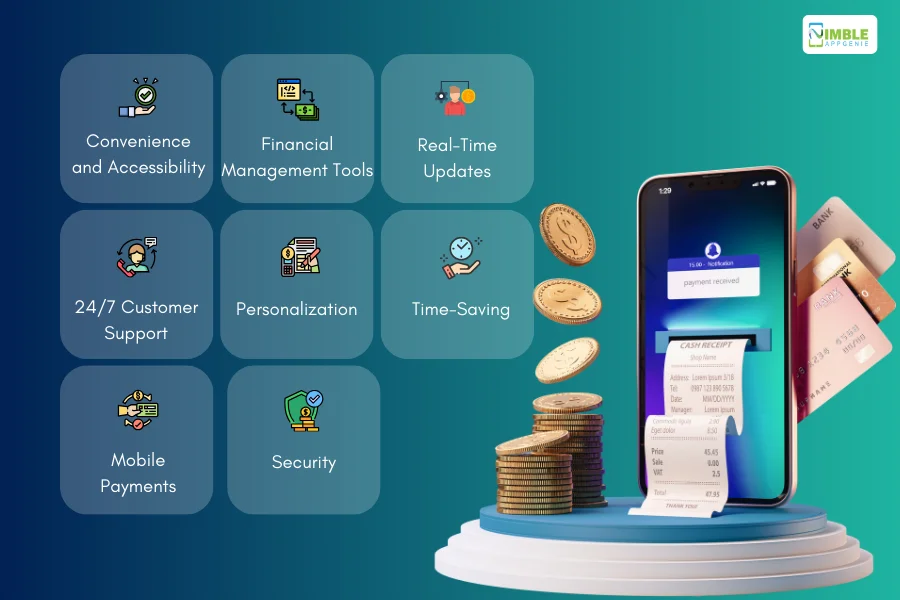
- Convenience and accessibility – Access your bank accounts and manage finances anytime, anywhere with a smartphone or tablet.
- Security – Securely view account balances, and transaction history, and make payments with multi-factor authentication and encryption.
- Time-saving – Avoid queues and branch visits by paying bills, transferring funds, and depositing checks remotely.
- Personalization – Set up custom alerts, track spending patterns, and manage budgets with personalized financial tools.
- Real-time updates – Receive instant notifications for transactions, account changes, and important financial information.
- Mobile payments – Make contactless payments in stores, online, and on the go with mobile wallets and QR codes.
- Financial management tools – Track expenses, set savings goals, and manage investments with integrated financial tools.
- 24/7 customer support – Access customer support through the app anytime, anywhere for assistance with banking needs.
For Businesses:
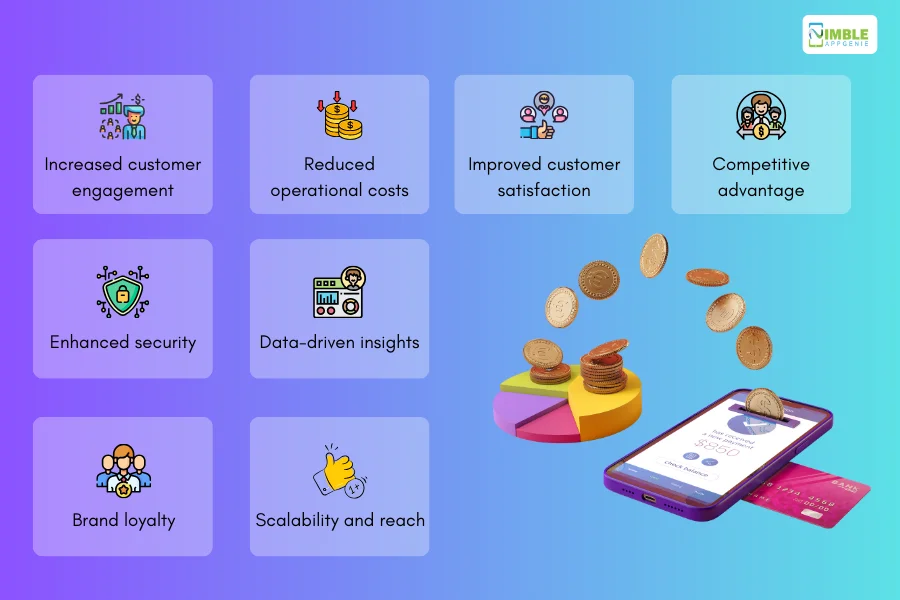
- Increased customer engagement – Offer convenient banking services and attract new customers through the app.
- Reduced operational costs – Lower branch traffic and operational expenses by encouraging mobile banking adoption.
- Improved customer satisfaction – Provide a seamless and personalized banking experience that keeps customers happy.
- Data-driven insights – Gain valuable customer data and analytics to improve products, services, and marketing strategies.
- Enhanced security – Implement advanced security measures to protect customer data and transactions within the app.
- Competitive advantage – Stand out from competitors by offering innovative and user-friendly mobile banking solutions.
- Scalability and reach – Expand your customer base and reach new markets without the need for physical branches.
- Brand loyalty – Build stronger brand loyalty by providing a convenient and personalized banking experience.
Now that we are done with this, let’s move to the next section where we shall be discussing a comparison between online banking and mobile banking apps.
Online Banking vs Mobile Banking
Confused between online banking and mobile banking?
Well, not only users, but companies often wonder how online banking and mobile banking are different. After all, if they aren’t different, why should anyone invest in app development, right?
But as it turns out, there are two very different things. The mobile solution is the preferred solution, giving companies ample reason to build digital banking apps.
Speaking of which, let’s look at a detailed comparison between online banking and mobile banking below.
| Features | Online Banking | Mobile Banking App |
| 1. Accessibility | Requires device with internet connection and browser (computer, tablet) | Requires smartphone or tablet with app installed |
| 2. Functionality | A wider range of features, including account management, bill payments, investments, loan applications, etc. | Primarily focused on core banking features like account viewing, transfers, bill payments, mobile deposits |
| 3. Security | Generally secure with multi-factor authentication and encryption | Secure with multi-factor authentication and device-specific measures, but potential risks with mobile devices |
| 4. Convenience | Accessible from anywhere with an internet connection | Accessible anytime, anywhere with a smartphone/tablet |
| 5. User experience | May require specific navigation within the browser | Designed for touch-based interaction and optimized for smaller screens |
| 6. Customization | More customizable features and personalization options | Limited customization options |
| 7. Integration with other apps | Limited integration with other apps | Can integrate with other financial apps and services |
| 8. Marketing and reach | Wider reach through website traffic and online campaigns | Targeted reach to active mobile users |
Clear enough? Well, the online and mobile banking debate is down. Now, let’s break down mobile banking apps into their different types.
Types of Banking Apps
One of the first steps to learn how to create a mobile banking app is understanding what you want to develop.
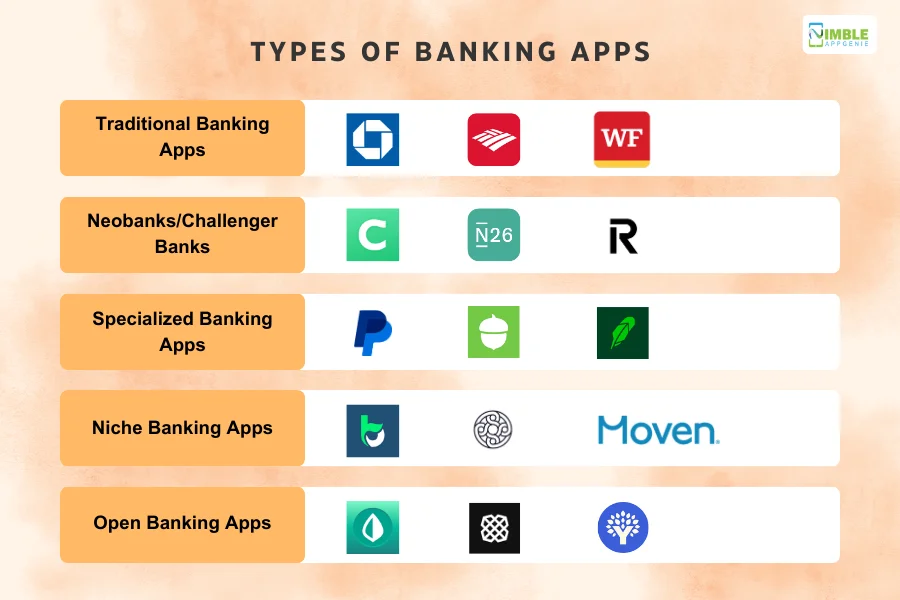
And to get that, you need to know it’s different types.
That’s exactly what we shall be discussing in this section of the mobile banking app development guide.
Let’s get started.
1. Traditional Banking Apps ( or dedicated banking apps)
The first on the list is, a traditional banking app.
As the name suggests, these are offered by the traditional banks as an extensive of their services. Or in other words, allows users to access their core banking services remotely via mobile phone.
They share some similarities with eWallet app development, but there are some big differences as well.
Chase Mobile, Bank of America Banking app, and Wells Fargo Mobile App are a few examples of traditional banking apps.
Features:
- Checking and savings account management (view balances, transfer funds, etc.)
- Bill payments and money transfers
- Mobile check deposit
- ATM Locator
- Account alerts and notifications
2. Neobanks/Challenger Banks
NeoBank App Development has become quite a popular part of mobile banking solutions in recent times.
The term “Neo” refers to new as in there are digital-first banks that don’t have any physical branches. There are high chance you have heard of these apps.
Some popular examples are apps like Chime, N26, and Revolut.
Features:
- Fee-free accounts and transactions
- Modern and intuitive user interface
- Innovative features like budgeting tools, investment options, and early paycheck access
- Focus on specific demographics (e.g., millennials, underbanked individuals)
3. Specialized Banking Apps
Well, specialized banking apps are “specialized” to perform certain tasks. And these are quite common in these days. Including apps like PayPal, Acorns, Robinhood,
They are still called banking apps despite offering different services as they are still directly connected to your bank account.
Specialized Industries:
- Investment platforms: Buying and selling stocks, bonds, ETFs, and other investment products
- Peer-to-peer payments app: Sending and receiving money from friends and family (e.g., Venmo, Zelle)
- International payment apps: Transferring money abroad with competitive rates and fees
- Microfinance: Investing in small businesses or projects in developing countries
- Cryptocurrency app: Buying, selling, and storing cryptocurrency assets
4. Niche Banking Apps
Every industry has its niche-specific apps. And mobile banking app concept isn’t different either.
These are tailored to specific communities or industries, these apps cater to specific niches. These include Bonsai, Mercury, and Moven.
Target Audience:
- Apps for Students: Managing student loans, budgeting tools, and financial education resources
- Apps for Small Businesses: Managing business finances, payroll, and invoicing
- Apps for Freelancers: Tracking income and expenses, tax management tools
5. Open Banking Apps
If you are familiar with Zelle’s Business model, you will understand the open banking app.
For those who are new to the concept, these platforms leverage open banking APIs. Let’s look at some of these apps:Mint, Plaid, and YNAB.
Features:
- Aggregating financial data from multiple accounts
- Personalized financial insights and recommendations
- Integration with third-party financial services like budgeting apps or investment platforms
So, these are the different types of banking solutions and it’s much clearer how to build a mobile banking app. Speaking of building, that’s exactly what we shall be discussing in the next section of the blog.
Things to Do Before Starting App Development
It’s time to go through a step-by-step guide for mobile banking app development.
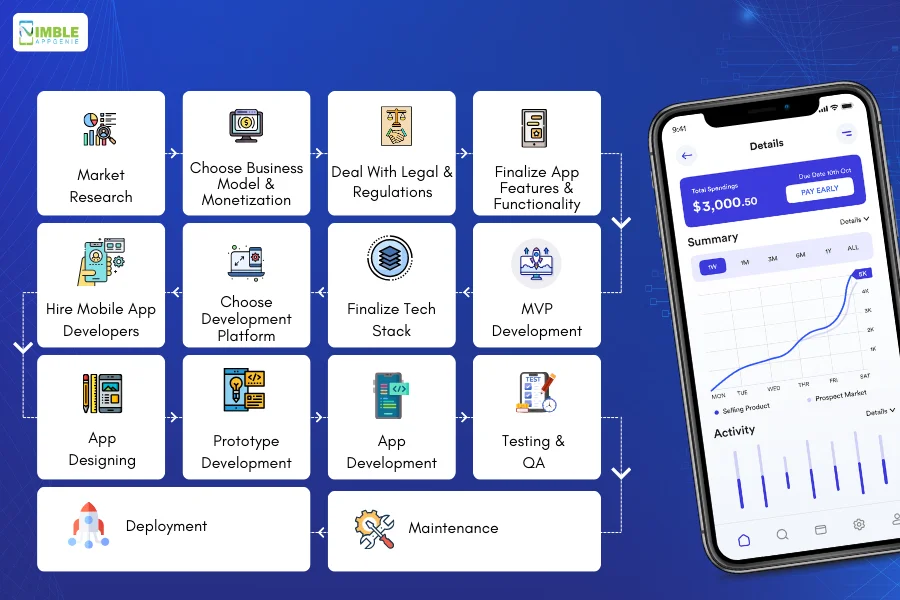
To make it much easier to understand, we have divided it into digestible chunks in terms of pre- and during-development.
So let’s get right into it, starting with:
Step 1: Market Research
The first step to making an online banking app is conducting thorough app market research.
While it might not seem as important as other steps on the list, it’s very crucial. After all, it’s with research that you gather data that is used as a base for every other decision.
So, what do you need to do in this step? Well, it looks something like:
- Competitor Analysis
- Trend Analysis
- User Research
And so on.
Not to mention, based on your fintech app idea and the data you collected, you create a UVP or unique value position.
In layman’s terms, it refers to the exclusive thing you are offering that makes you stand out in the market.
Step 2: Choose a Business Model & Monetization
With a concept ready, it’s time to make some money. After all, that’s one of the main reasons to build an online banking application.
In any case, this is where you choose the business model or what we call app monetization strategies. Let’s look at a few of them below, starting with:
| Business Model | Description | Strengths | Weaknesses |
| 1. Freemium | Offer basic features for free and charge for premium features like budgeting tools, investment access, or higher transaction limits. | Low barrier to entry, attracts broader user base, recurring revenue from premium users. | Requires careful balancing of free vs. paid features, and potential user frustration with limited free features. |
| 2. Subscription Apps | Charge a monthly or annual fee for access to all features and functionalities of the app. | A predictable revenue stream encourages user engagement and retention. | A higher initial barrier to entry may limit the user base compared to a freemium model. |
| 3. Transaction-based fees | Charge a fee for specific transactions like international payments, bill payments, or ATM withdrawals. | Revenue is directly tied to user activity, suitable for users who perform frequent transactions. | Requires sufficient transaction volume to be profitable, potential user dissatisfaction with additional fees. |
| 4. Marketplace model | Integrate with third-party financial services (loans, insurance, wealth management) and earn commissions on referred users and completed transactions. | Diversified revenue streams tap into the additional financial needs of users. | Requires strong partnerships with third-party providers, and relies on user trust and engagement with integrated services. |
| 5. Advertising | Display targeted ads within the app based on user data and financial habits. | Can generate additional revenue without charging users directly. | Potential user privacy concerns, and intrusive ads may negatively impact user experience. |
| 6. Data insights & partnerships | Aggregate and anonymize user data to sell insights to financial institutions or marketing companies. | Additional revenue stream without impacting user experience directly. | Raises ethical concerns regarding data privacy, and requires robust data security and user consent management. |
Now that we are done with the monetization stuff, let’s move to the next step of learning steps to create an online banking app.
Step 3: Deal With Legal & Regulations
Whenever you want to create a fintech app of any form or niche, you need to deal with a lot of legal and regulatory compliances.
These are Very, Very Important for very obvious reasons. In fact, ignoring compliances is one of the top reasons why fintech startups fail.
| Category | Regulation/Compliance | Impact on App Development |
| 1. Financial Regulations |
|
|
|
| |
|
| |
|
| |
| ||
| 2. Security & Compliance Standards |
|
|
| 3. Consumer Protection |
|
|
| Category | Sub-Point | Description |
| 1. Data Localization | Regional regulations | Data storage within specific geographical boundaries (e.g., EU, China). |
| 2. Biometric Authentication | Biometric data regulations | Compliance with regulations governing the collection, use, and storage of biometric data. |
| 3. Accessibility | Standards (WCAG) | Cater to users with disabilities (e.g., visual, and auditory impairments). |
| 4. Third-Party Integrations | Partner compliance | Ensure third-party services comply with relevant regulations. |
If you want to learn how to develop an online banking application that’s successful, you need to focus on this step.
In any case, now that we are done with this, let’s move to the next section where we shall be going through the top feature.
Step 4: Finalize App Features & Functionality
Much like the eWallet app feature, functionality, and features in mobile banking applications are also super important.
So, let’s get started with the basic yet essential mobile banking app feature and then move to more advanced ones.
| Essential Features | ||
| User Panel | Bank Panel | Admin Panel |
| Account Balances | Real-Time Transaction Monitoring | User Management (Advanced) |
| Transaction History | User Management | Role-Based Access Control |
| Funds Transfer (Internal/External) | Fraud Detection & Prevention | Security Management |
| Bill Payments | Report Generation | App Version Management |
| Mobile Top-Up | Customer Support Management | Push Notification Management |
| Card Management | Performance Analytics | Content Management (if applicable) |
| Investment Monitoring (if applicable) | Regulatory Compliance Tools | Marketing & Campaign Management |
| Loan Management (if applicable) | Branch Management (if applicable) | Data Management & Analytics |
| Profile Management | Integrations with Third-Party Services | System Monitoring & Maintenance |
| Secure Messaging | System Administration | Regulatory Reporting |
While basic features are the bread and butter, you need advanced features to attract customers and keep them engage, delivering value.
Here are some mobile banking app advanced features that you should consider.
| Advanced Features | |
| 1. AI-powered Budgeting & Financial Insights | Analyze your spending habits, categorize transactions, and offer personalized tips for saving and budgeting like a pro. Imagine an AI assistant in app keeping your finances on track! |
| 2. Investment Management Tool | Trade stocks, ETFs, and other investments directly within the app, taking control of your financial future at your fingertips. |
| 3. Cardless ATM Withdrawals | Ditch the plastic! Generate a temporary code to access your cash at ATMs, leaving your physical card safe at home. |
| 4. Voice-Activated Banking | Manage your finances on the go, hands-free! Check balances, transfer funds, and pay bills using simple voice commands. |
| 5. Biometric Authentication | Secure your finances with cutting-edge technology. Log in and authorize transactions with a simple fingerprint scan, facial recognition, or iris scan. |
| 6. P2P Payments with QR Codes | Say goodbye to messy bank details! Split bills or send money instantly by scanning a QR code with your phone. |
| 7. Gamification & Reward | Turn money management into a fun game! Earn points, badges, and rewards for making wise financial decisions, keeping you motivated. |
| 8. Open Banking Integration | Connect your accounts with other financial apps and services, creating a customized financial ecosystem that works for you. |
| 9. Blockchain-Based Transactions | Explore the future of finance! Utilize blockchain technology for secure and transparent transactions, ensuring peace of mind. |
| 10. Virtual Assistants | Get personalized financial advice, answer questions, and complete tasks with your own virtual financial assistant, always there to help. |
Now with basic decisions made, it’s time to find fintech app developers for you.
Step 5: Hire Mobile App Developers
When we are dealing with a complex fintech app, you need expert help. That’s why, before moving any further, you need to find an app developer.
Now, there are various ways to acquire a development partner:
- Assemble an in-house team
- Go for staff augmentation to enhance the existing team
- Outsource to a fintech development company.
Now, each of them has their own benefit when it comes to developing a mobile banking software. But people are often confused between in-house and Outsourcing. And the reason is clear.
In recent times – however – outsourcing is generally a preferred model of acquiring app developers.
Speaking of which, once this is done, we move to the next section.
Step 6: Choose Development Platform
One of the most crucial steps to create a mobile banking app is choosing a platform.
Speaking of platforms, there are two main choices when going with mobile app development; these are Native and hybrid app development.
Hybrid being as it is, gives you many options when it comes to technology for instance, you can create an app with react native.
On the other hand, when it comes to native app development, you can either Hire iOS app developers or go with Android app developers.
To draw a line, native vs hybrid and iOS vs Android have been quite a long debate. But understand this, while the hybrid platform has quite some flexibility and reach, it slows down in terms of performance.
On the other hand, native apps offer robust performance and an amazing feature set.
Moving to division in the native platform, both iOS and Android are great, catering to two entirely different types of audiences. If you want to make more money in terms of paid apps or direct subscriptions, iOS is a good option. If you want to reach as many people as possible and opt for advertisement or user data monetization, android rules.
These play a big role in helping you decide whether to hire Android app developers or iOS app developers.
In any case, once you are done with this, we move to the next step, which is selecting a tech stack to build an online banking app.
Step 7: Finalize Tech Stack
The mobile app tech stack plays an important role in a feature, look, as well as the overall performance of the application.
One of the most important of understanding how to develop a mobile banking app that’s successful is, understanding the importance of tech stack and how to choose the right one.
Moving on, let’s look at a sample tech stack for mobile banking apps.
| Layer | Technology | Description |
| 1. Operating System | iOS (Apple) / Android (Google) | The mobile app will be developed for either iOS or Android platforms, or both. |
| 2. Development Environment | Xcode (iOS) / Android Studio (Android) | These are the official Integrated Development Environments (IDEs) for iOS and Android app development, respectively. |
| 3. Programming Languages | Swift / Kotlin | Swift is the primary language for iOS app development, while Kotlin app development is preferred for Android. |
| 4. User Interface (UI) | UIKit (iOS) / Android UI Framework | These frameworks provide components and tools for building the app’s user interface. |
| 5. Backend Development | Node.js / Python / Java | Backend technologies for handling server-side logic, data storage, and APIs. Node.js is often used for real-time features. |
| 6. API Development | RESTful API / GraphQL | Create APIs for communication between the mobile app and the server. RESTful APIs and GraphQL are common choices. |
| 7. Database | PostgreSQL / MySQL / MongoDB | Databases for storing user data, transactions, and other critical information. Choice depends on specific requirements. |
| 8. Authentication | OAuth 2.0 / OpenID Connect | Secure user authentication and authorization protocols. |
| 9. Security | SSL/TLS, Encryption, OWASP Top Ten | Implement security measures like data encryption, SSL/TLS for secure communication, and protection against common security threats. |
| 10. Push Notifications | Firebase Cloud Messaging (FCM) / Apple Push Notification Service (APNs) | Services for sending push notifications to users’ devices. |
| 11. Payment Integration | Stripe / Samsung Pay / Apple Pay / Google Pay | Integrate payment gateways for transactions and financial operations. |
| 12. Analytics | Google Analytics / Firebase Analytics | Tools for tracking user behavior and app performance. |
| 13. Version Control | Git | To manage and collaborate on the source code. |
| 14. Continuous Integration/Continuous Deployment (CI/CD) | Jenkins / Travis CI / CircleCI | Automate testing, building, and deployment processes. |
| 15. Cloud Hosting | AWS / Azure / Google Cloud | Host backend servers and databases on cloud platforms for scalability and reliability. |
| 16. Performance Monitoring | New Relic / AppDynamics | Monitor app performance in real-time and identify bottlenecks. |
| 17. App Store Deployment | Apple App Store / Google Play Store | Publish the app on the respective app stores for distribution. |
| 19. Code Repository | GitHub / GitLab / Bitbucket | Store and manage the source code. |
Step 8: MVP Development (Optional)
So, what’s MVP?
In app development, an MVP is a solution with just enough features to be usable by early customers who can then provide feedback for future app development.
The goal of an MVP is to get real-world feedback from users as early as possible in the development process so that the product can be iterated on and improved before investing a lot of time and money into features that may not be needed or desired.
You need to under MVP development is optional.
Companies only do it when they are either trying to generate funding for a mobile app or they need proof that the concept will work.
However, if it’s a well-established idea or has enough funding, you can directly skip to the next step.
Steps To Develop a Mobile Banking App
With the preparations done, it’s time to get to the next step of the app development process. Let’s look at the design process.
Step 9: Design The App
Now that we are done with all the preparation, it’s time to start the actual development. The first thing would be, UI/UX Design.
When it comes to mobile applications, especially ones dealing with inherently boring concepts like banking, they need to look “amazing”.
That’s why you need to invest good time and money in Fintech App Design if you want to develop an online banking app that’s successful. And that’s what makes it one of the most important steps to create a mobile banking app.
In any case, once all of this is done, it’s time to move to the next step.
Step 10: App Development
It’s time to build a digital banking app, in a technical sense.
In layman’s terms, it is this step that all of the technical aspects are given the face of mobile applications.
In longer terms, here fintech app developers combine front-end design and interface with the back-end, combining all of it together to build a running banking mobile app.
As one might assume, it is the most time and resource-consuming step of the process. And once this is done, we move to the next step.
Step 11: Testing & QA
And now, we have come to the testing part of this step-by-step guide to create a successful banking app.
App Testing & QA plays an important role in polishing the final product as well as client satisfaction. While testing is something that goes on for the entire development process, this is one final round.
Depending on the platform there are different strategies and techniques. In other words, Testing for iOS apps and Android apps can be a little different.
In any case, once all of this is done and chances are made, we move to deployment.
Step 12: Deployment
It’s finally time to deploy the app.
This is non-technical step and once the app is submitted it takes 2 weeks for approval or rejection.
Well, speaking of rejection, apple apps get rejected more frequently when compared to android ones, due to the platform’s strict guidelines.
However, once the app is approved, you can start with App Store optimization.
Step 13: Maintenance
While the initial development process is done, and you know, how to make a mobile banking app, the work is not finished just yet.
To create a digital banking app that takes the market by storm and holds the position, you need to invest in mobile app maintenance.
Plus, this is also the right time to start the mobile app market.
So, this is how you create a banking app. Now, let’s answer one of the most commonly asked question, how much does it cost to develop a mobile banking app.
How Much Does It Cost To Develop Banking App?
Mobile app development cost is hard to predict.
| Features | Low Estimate ($) | High Estimate ($) |
| 1. User Registration | $1,000 | $5,000 |
| 2. Account Balance | $1,000 | $7,000 |
| 3. Transaction History | $1,500 | $8,000 |
| 4. Fund Transfer | $2,000 | $10,000 |
| 5. Bill Payment | $2,000 | $12,000 |
| 6. Mobile Check Deposit | $2,500 | $15,000 |
| 7. ATM/Branch Locator | $1,500 | $7,000 |
| 8. Alerts & Notifications | $1,000 | $6,000 |
| 9. Customer Support | $1,500 | $8,000 |
| 10. Multi-language Support | $1,500 | $6,000 |
| 11. Biometric Authentication | $2,500 | $15,000 |
| 12. Mobile Wallet Integration | $3,000 | $20,000 |
| 13. Budgeting Tools | $2,000 | $10,000 |
| 14. Investment Management | $3,000 | $20,000 |
| 15. Enhanced Security | $2,500 | $15,000 |
| 16. Customization | Varies | Varies |
That’s why so many people ask, how much does it cost to develop a mobile banking app?
While the average mobile banking app development cost ranges from $10,000 to $250,000+, you need to take in account, complexity,
| Expense Category | Low Estimate ($) | High Estimate ($) |
| 1. Project Planning | $1,000 | $5,000 |
| 2. UI/UX Design | $2,000 | $20,000 |
| 3. Front-end Development | $5,000 | $30,000 |
| 4. Back-end Development | $5,000 | $50,000 |
| 5. Security & Compliance | $2,000 | $15,000 |
| 6. Testing | $3,000 | $15,000 |
| 7. Mobile App Deployment | $1,000 | $5,000 |
| 8. API Integration | $2,000 | $20,000 |
| 9. Maintenance & Updates | $1,000/year | $10,000/year |
| 10. Marketing & Promotion | $2,000 | $15,000 |
| 11. Contingency (10% of total) | Varies | Varies |
| 12. Total (Low Estimate) | $22,000 | $175,000 |
| 13. Total (High Estimate) | $133,000 | $250,000+ |
If you want to get an accurate cost estimation, you need to consult an mobile app development company.
They will be able to give you a cost estimation based on your project needs and requirements.
How Long Does It Take To Build Mobile Banking App?
Following the development cost, people often also wonder how long will it take to develop the application.
Well, much like cost it depends on various factors.
Mobile app development time can vary between few weeks to months and even years. Here’s a complete breakdown.
| Features | Development Time (Low Estimate) | Development Time (High Estimate) |
| 1. User Registration | 1-2 weeks | 2-4 weeks |
| 2. Account Balance | 1-2 weeks | 2-3 weeks |
| 3. Transaction History | 1-2 weeks | 2-4 weeks |
| 4. Fund Transfer | 2-4 weeks | 4-6 weeks |
| 5. Bill Payment | 2-4 weeks | 4-6 weeks |
| 6. Mobile Check Deposit | 3-6 weeks | 6-8 weeks |
| 7. ATM/Branch Locator | 1-2 weeks | 2-3 weeks |
| 8. Alerts & Notifications | 1-2 weeks | 2-4 weeks |
| 9. Customer Support | 1-2 weeks | 2-4 weeks |
| 10. Multi-language Support | 1-2 weeks | 2-3 weeks |
| 11. Biometric Authentication | 2-4 weeks | 4-6 weeks |
| 12. Mobile Wallet Integration | 3-6 weeks | 6-8 weeks |
| 13. Budgeting Tools | 2-4 weeks | 4-6 weeks |
| 14. Investment Management | 3-6 weeks | 6-8 weeks |
| 15. Enhanced Security | 2-4 weeks | 4-6 weeks |
Why Develop Mobile Banking App For Your Institution?
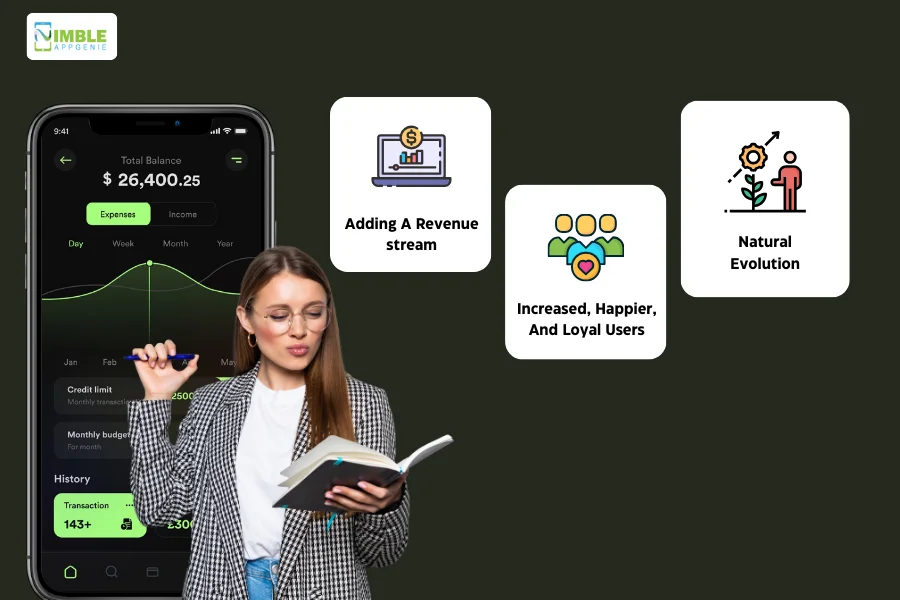
Now that we are done with how to, how much, and how long of “mobile banking app” it’s time to look at why.
Why build a mobile banking app?
Well, there are various reasons to invest in app development. And in this section of the ultimate guide to create a mobile banking app, we shall be going through exactly that.
Adding A Revenue Stream
If there’s one thing that fintech monetization strategies tell us, it is that there are various ways to generate revenue via a mobile banking application.
And one of the best ways to do so, is via mobile application.
Statistics clearly shows majority of the world population using mobile phones. And adoption is even higher in USA, giving financial institutions as well as banks a perfect reason to invest in creating digital banking app.
More, Happier, And Loyal Users
Customer is everything for a business and same goes for financial businesses.
Well, what if we told you, you can get more customers, retain them, and keep them satisfied with a mobile application?
Mobile banking application does all of that and more. We have discussed the benefits of this app for user throughout the blog.
In a brief, users want mobile app for ease of use and quality of service it delivers.
Delivering this, business can attract their target audience, retain them as well as existing user all while satisfying everyone involved.
Natural Evolution
For a bank or any other financial institution, you need to understand that modern technologies like mobile apps are the part of the natural evolution of industry.
It’s just like how Credit Cards were new to the market but now everyone has one. Mobile banking app industry is somewhere in the middle, established but still growing at an amazing rate.
Therefore, this is the high time to create a mobile banking application.
Now that we are done with the reason to create a digital banking app, let’s look some case studies
Successful Mobile Banking App Case Studies
Market is filled with success fintech apps.
And if you want to create a banking platform that capture the heart of masses, you too need to learn from the best.
That’s why we shall be going through some of the best digital banking apps in different parts of the world, learning what makes them successful.
1. Revolut (Europe)
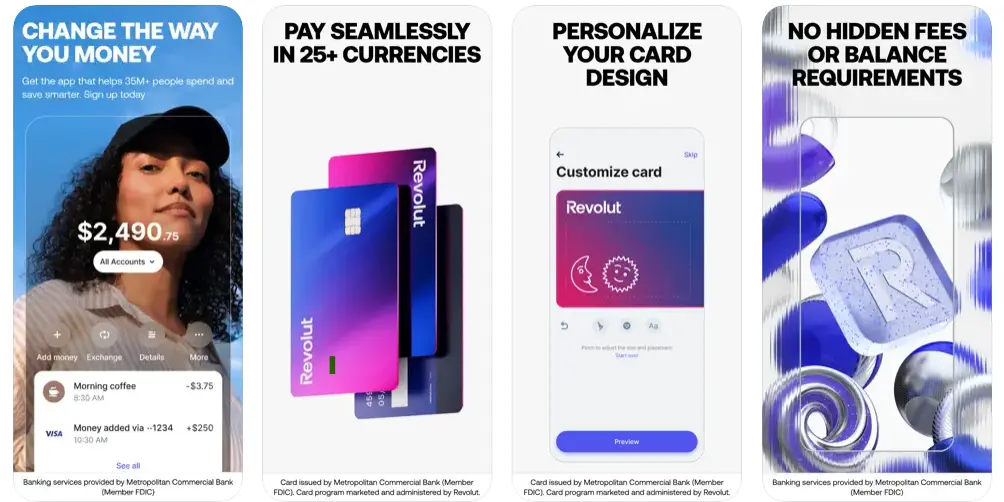
Let’s start with Revolut.
Ruling the European fintech market, the app brings true innovation to the world of banking.
Since its launch in 2015, Revolut has captivated over 20 million users across Europe by redefining the banking experience. Plus, it has inspired a lot of people to go for popular apps like Revolut.
Known for it’s feature reach platform, you can access fuctions like instant currency exchanges, multi-currency debit cards, and a wide array of features from budgeting tools to investment options,
So, what makes it stand out of the rest?
Well, Revolut stands out for its competitive rates and fee-free transactions.
If you’re aiming to create a mobile banking app that truly resonates with users, Revolut’s success story highlights the importance of diverse features and a strong focus on user experience.
2. N26 (Europe)
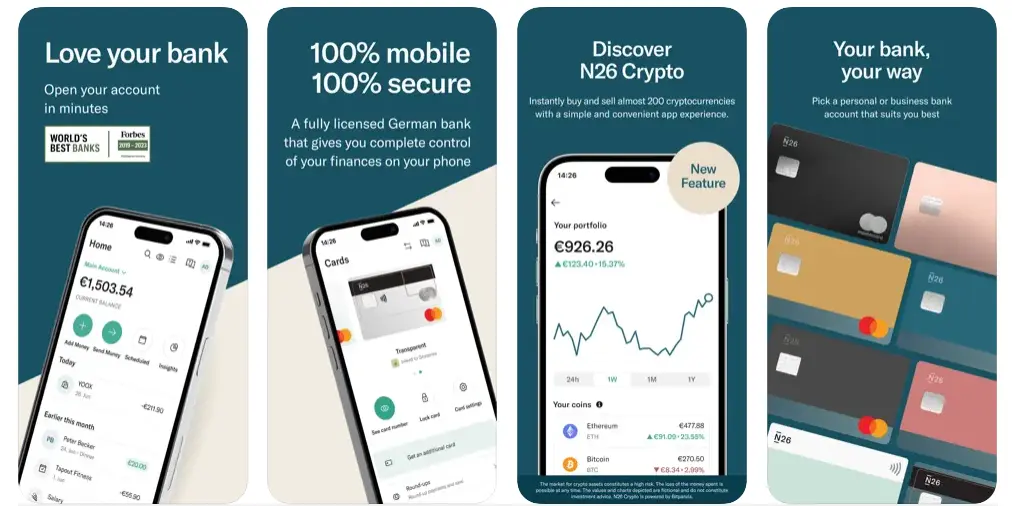
If you want to create a fintech app that’s successful, you better learn from N26.
This mobile-first banking app, with its intuitive interface, has attracted over 8 million customers by making banking both simple and enjoyable.
Some of its key features include real-time transaction notifications and budgeting tools are wrapped in a user-friendly package, offering a clear blueprint for those looking to innovate in the mobile banking space.
N26’s approach shows how a focus on design and user experience can transform the way people manage their finances.
That’s something businesses can learn a lot form.
3. Zelle (USA)
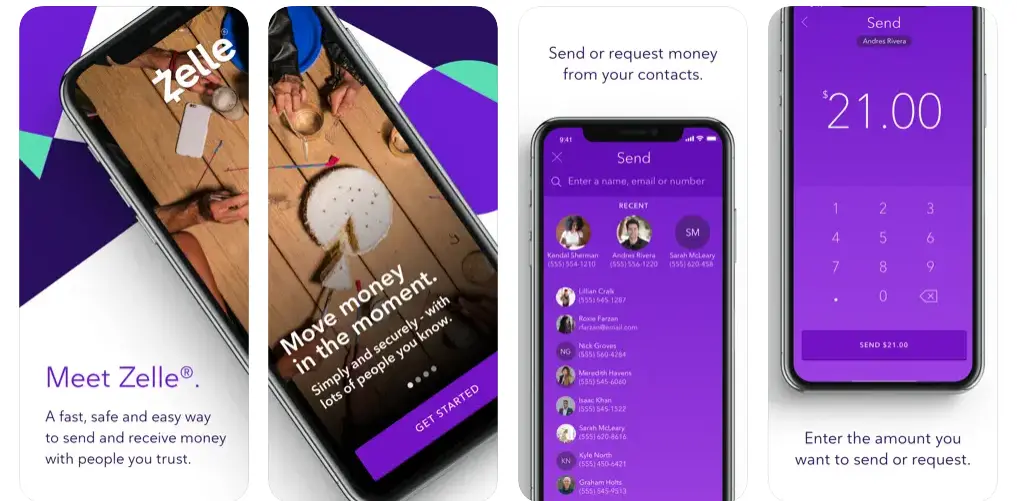
Launched by a consortium of US banks in 2017, Zelle has quickly become a household name for instant peer-to-peer payments.
Integrated within existing banking apps, it offers a seamless experience for users, contributing to its rapid growth.
Zelle stands as a testament to the power of collaboration and convenience in the digital payment space.
For people who want to make a digital banking app, Zelle’s success underscores the value of integrating with existing systems and focusing on simplicity and security to enhance user satisfaction.
4. Ally Bank (USA)
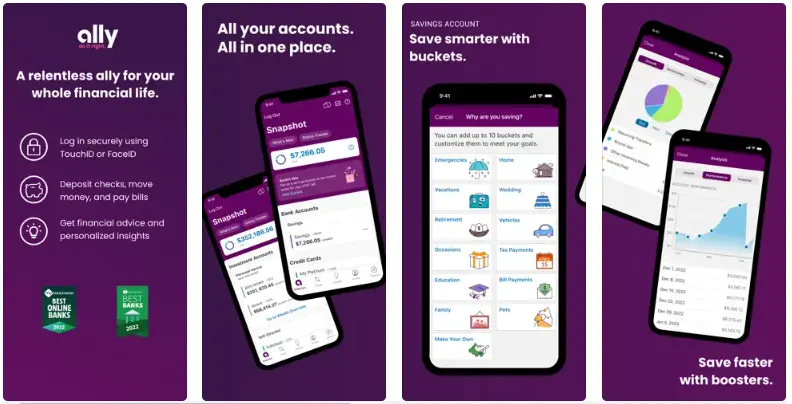
If you are a US citizen, there are high chances you have heard of the Ally Bank.
This is the app that brings online banking to new heights with its digital expertise and customer-centric features.
As an online-only bank, Ally offers everything from mobile check deposits to high-yield savings accounts, all accessible through a highly rated mobile app.
This focus on convenience, competitive rates, and a comprehensive suite of services makes Ally a model for how digital-first strategies can lead to high customer satisfaction and loyalty in the mobile banking industry.
5. Monzo (Europe)
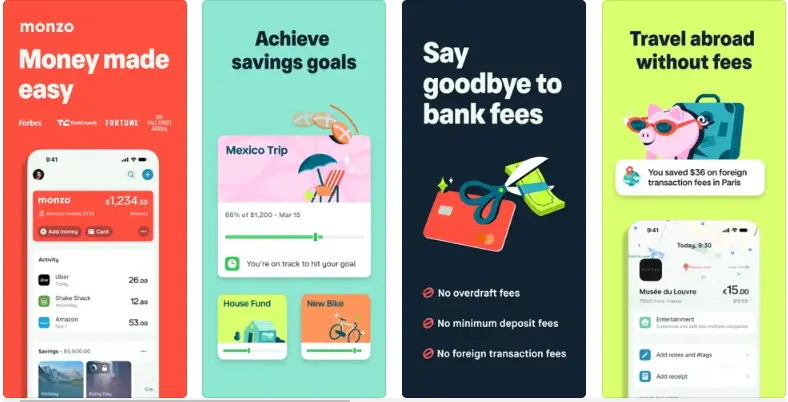
Lastly, we have Monzo.
This digital banking application has made waves in the UK banking scene by emphasizing transparency, user experience, and innovative features like virtual cards and personalized budgeting tools.
For those looking to break into the mobile banking market, Monzo’s approach provides valuable insights into the importance of customer trust and engagement through innovative features and a transparent pricing model.
With over 6 million customers, its success lies in its commitment to making banking more accessible and user-friendly.
So, those were some successful examples that inspire people to build mobile banking platform that are successful in market.
Now, to back it up with trends, let’s look at them in the section below.
Banking App Trends
One of the secrets to creating banking apps that’s popular among users is, taking inspiration from trends.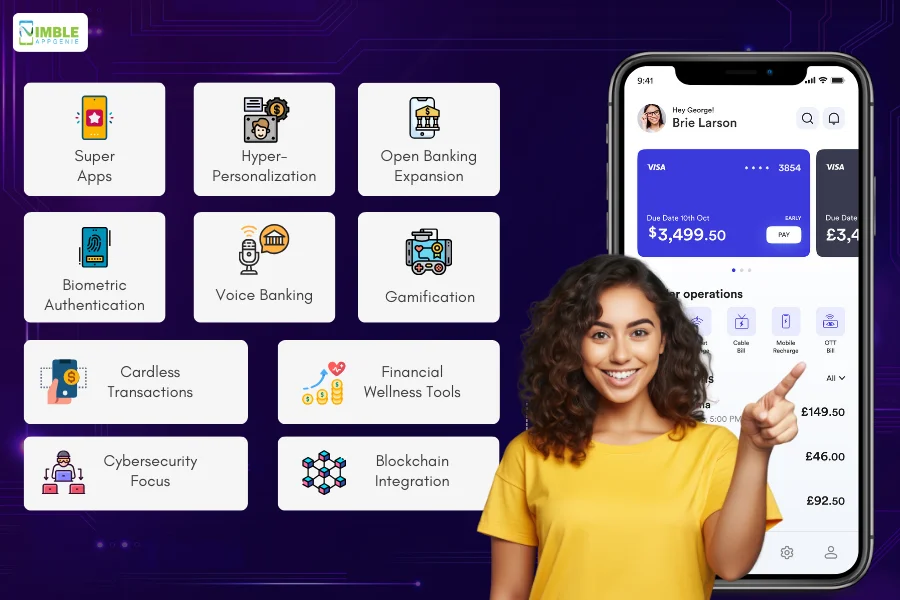
Let’s see what these mobile banking app trends are.
1. Super Apps
Have you heard of Super app development?
In layman’s terms, this concept is about creating a unified marketplace where users can find solutions to their ever need.
Recently, a lot of super apps have appeared.
In addition to this, mobile banking apps evolving into all-encompassing “super apps,” offering non-financial services like bill payments, e-commerce, investments, and more.
2. Hyper-Personalization
Personalization has been an industry 4.0 trend for some time.
However, with the power of AI in mobile App, hyper personalization can be enabled driving superior user experience and satisfaction.
With this trend, you can create AI-powered Fintech app that deliver custom financial products, advice, and budgeting tools to individual user needs and preferences.
3. Open Banking Expansion
Whether you talk about creating an eWallet app or using a mobile banking platform, the fintech infrastructure as we know it today won’t be possible without open banking.
You see, these Open banking APIs enabling seamless data sharing and integration with third-party financial services, promoting competition and innovation.
If you want to enable seamless payment across the platform.
4. Biometric Authentication
It goes without saying, when you talk about digital banking app, security is of paramount concern. And biometric authentication is one feature that can make a platform that much more secure.
With the increased adoption of fingerprint, facial recognition, and voice biometrics for secure and convenient user authentication, mobile banking apps are safer than ever.
5. Voice Banking
If you have been keeping up with the digital and IT industry, you know that voice based operation has become trends some time ago.
For instance, voice based search, too the market by storm and former changed online platforms on many level.
Using this trend, you can Voice assistants integrated into the mobile banking app for hands-free access to account information, transactions, and customer support.
6. Gamification
Well, like we said before “Banking” can be a boring affair.
That’s why gamification has become such a big trend in the world of digital banking platforms.
Engaging features like rewards, badges, and challenges to encourage positive financial behaviours and improve user engagement.
7. Cardless Transactions
Well, well, we have officially entered the age of contactless payment. And it has become the “new normal”.
Whether you talk about NFC payment apps or QR code payment technology, people love it and they are asking for more.
Therefore, if you want to create a digital banking app, you have to consider these feature, as they promote both safety and convenience.
8. Financial Wellness Tools
financial wellness is important. So much so that, it has become a trend.
Financial literacy apps are empowering people with better and more informed decision making. While budgeting apps have been helping people manage their day to day expenses.
This can be a good addition to the overall mobile banking app ecosystem.
9. Cybersecurity Focus
It is no secret that in recent time cyber threats have increased by many folds.
To counter it, continued innovation in cybersecurity measures to protect user data and transactions from evolving threats.
10. Blockchain Integration
Blockchain development can do wonders in the fintech industry.
If you are planning to build a digital banking app, you should be exploring blockchain technology for secure and transparent payment processing, identity management, and other applications.
And those are the Banking industry trends. With this out of the way, let’s look at trends.
Mobile Banking App Development Challenges
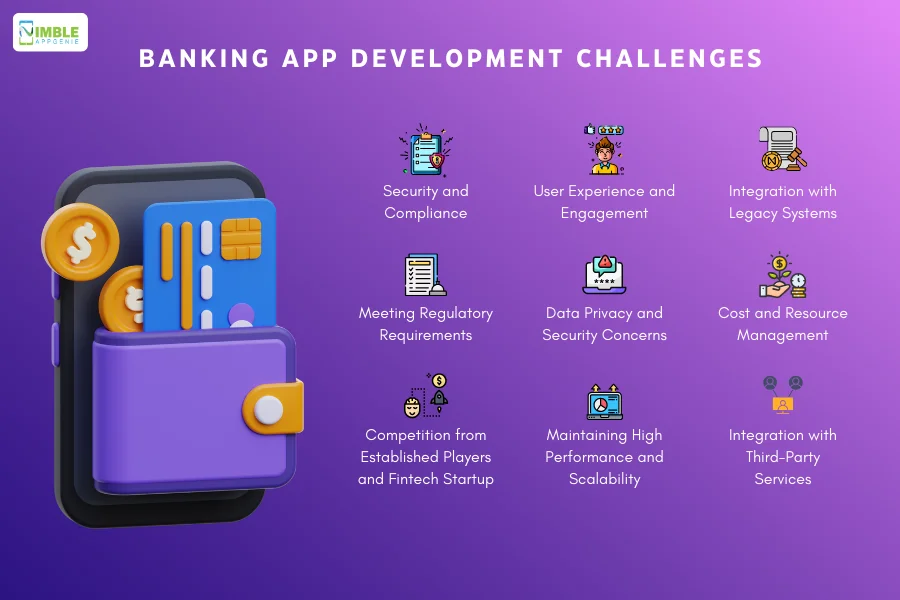
There are challenges in every and any form of project.
So, when you are planning to create a mobile banking app, this is something you must take in consideration.
Speaking of which, let’s look at some top challenges seen in banking app creation.
| Challenge | Solution |
| Security and Compliance | Implement multi-factor authentication, encryption, and regular penetration testing. Ensure compliance with financial regulations and data privacy laws like GDPR and CCPA. |
| User Experience and Engagement | Conduct user research, prioritize core features, use clear and concise language, employ design thinking principles, and gather user feedback for continuous improvement. |
| Integration with Legacy Systems | Utilize APIs for efficient integration, choose agile development methodologies, and involve stakeholders from both sides for smooth collaboration. |
| Meeting Regulatory Requirements | Partner with legal and compliance experts, stay updated on regulatory changes, and build flexibility into the app to adapt to future requirements. |
| Data Privacy and Security Concerns | Offer transparency about data collection and usage, implement strong data security measures, and obtain explicit user consent. |
| Competition from Established Players and Fintech Startups | Identify a unique value proposition, focus on innovative features and user experience, and leverage user feedback to differentiate your app. |
| Cost and Resource Management | Utilize cost-effective development tools and resources, prioritize essential features, and consider phased development with budget optimization. |
| Maintaining High Performance and Scalability | Conduct proper load testing, choose scalable cloud infrastructure, and optimize the app for efficient data processing. |
| Integration with Third-Party Services | Select reliable third-party partners, utilize standardized APIs, and thoroughly test integrations before rollout. |
Nimble AppGenie, Here To Help
Do you want to develop a banking app?
As we discussed in blog, creating an app from ground up can be quite some work. But don’t worry because we have got you covered.
Nimble AppGenie is a renowned mobile banking app development company with years’ worth of experience in the market, working on 700+ projects, and delivering 95% client satisfaction.
Some of our top projects are, as mentioned below:
- Pay By Check – Pay by Check is a popular ewallet mobile app in the United States of America. It allows users to transfer, pay, or even exchange currency.
- SatPay – An eWallet platform, it’s a Versatile eWallet Solution that allows users to request, receive, and send payment without hassle.
- CUT – an E-wallet Mobile App, CUT is available in China and Myanmar. It works well with both RMB and MMK currencies.
- SatBorsa – a Currency Exchange Fintech app, SatBorsa is one of the platforms that is available on both platforms, iOS, and Android.
For our work and innovation across industries, we are recognized by top platforms like Clutch.co, GoodFirms, and DesignRush.
If you have an idea for a digital banking app, we how to bring it to reality. Hire mobile app developers in 24 hours with us and supercharge your project.
Conclusion
To create a mobile banking app you need a comprehensive understanding of the market, user needs, and regulatory requirements. The key to success lies in offering a secure, user-friendly, and feature-rich platform that stands out in the competitive fintech landscape.
Businesses must navigate challenges such as ensuring robust security, providing an engaging user experience, integrating with legacy systems, and adhering to stringent regulatory standards. Overcoming these hurdles is crucial for developing an app that meets the evolving needs of modern banking customers and leverages the latest technological advancements for a seamless banking experience.
FAQs
The requirements for a mobile banking app include security measures such as multi-factor authentication and encryption, real-time transaction monitoring, funds transfer capabilities, bill payment functionality, mobile top-up options, card management, investment monitoring (if applicable), profile management, secure messaging, and more. These features should cater to user needs while complying with legal and regulatory standards.
To create a mobile app specifically for Access Bank or any other bank, you would typically need to partner with the bank itself or have authorization from the bank to develop an app for their customers. This involves collaboration with the bank’s IT and legal teams, adhering to their security and compliance standards, and using their APIs and systems to provide banking services through the app.
Creating an online banking platform involves similar steps to creating a mobile banking app, including conducting market research, choosing a business model, dealing with legal and regulatory requirements, hiring developers, selecting a development platform, and finalizing the tech stack. The main difference is that online banking platforms are typically web-based and accessible through browsers, while mobile banking apps are specific to smartphones and tablets.
Some of the main challenges are:
- Security and Compliance
- User Experience and Engagement
- Meeting Regulatory Requirements
- Data Privacy and Security Concerns
- Cost and Resource Management
- Integration with Third-Party Services
The best online banking app can vary depending on individual preferences, needs, and geographic location. Some popular online banking apps include Ally Bank, Chime, Capital One 360, and others. It’s essential to evaluate different options based on your specific requirements, such as account types, features, fees, and user experience, to determine which one is best for you.
Online banking typically refers to accessing banking services through a web browser on a computer or tablet, while a banking app is a dedicated mobile application designed for smartphones and tablets. The key differences lie in the accessibility and functionality of the two platforms, with mobile banking apps often offering a more streamlined and touch-optimized experience for on-the-go banking.
The cost of developing a banking app can range from $10,000 to $250,000 or more, depending on various factors such as the complexity of features, the development platform (iOS, Android, or both), the tech stack, and the geographic location of the development team. It’s essential to budget for ongoing maintenance and updates as well.
The steps to create a mobile banking app:
- market research
- choosing a business model
- dealing with legal and regulatory requirements
- hiring mobile app developers
- selecting a development platform
- finalizing the tech stack
- designing the app
- developing a prototype
- building the app
- testing and deploying it
Starting your own business for a mobile banking app involves identifying a unique value proposition, conducting market research, developing a business plan, securing necessary funding, hiring a skilled development team, dealing with legal and regulatory requirements, and launching your app in the market. Success also depends on delivering a user-friendly and secure app with relevant features.
The future of mobile banking apps is likely to include trends such as super apps that offer a wide range of financial and non-financial services, hyper-personalization using AI, open banking expansion, increased use of biometric authentication, voice banking with virtual assistants, gamification elements, cardless transactions, enhanced financial wellness tools, continued focus on cybersecurity, and potential integration of blockchain technology for secure and transparent transactions.
To create the best banking app, you should consider factors such as:
- User-friendly design
- robust security measures
- a wide range of useful features
- compliance with regulatory standards
- Seamless integration with other financial services
Additionally, staying updated with the latest trends and technologies in the banking industry is crucial for success.

Udai Singh is a senior content writer with over 6 years of experience in creating content for FinTech, eWallet, EdTech, and App Development. He is an expert in simplifying complex concepts and creating engaging content that resonates with the audience.
Table of Contents




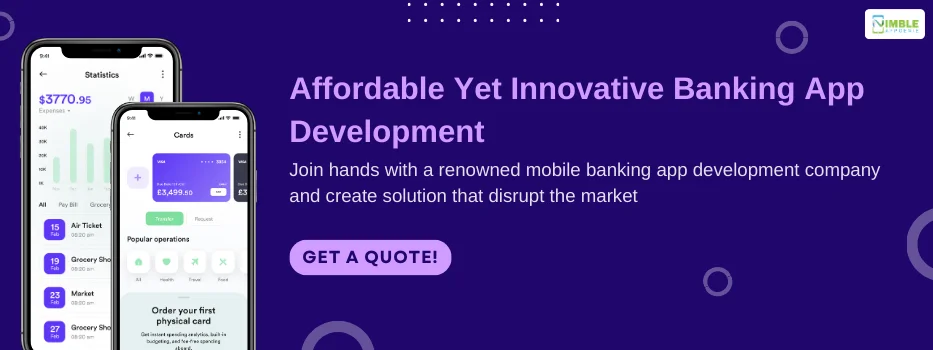
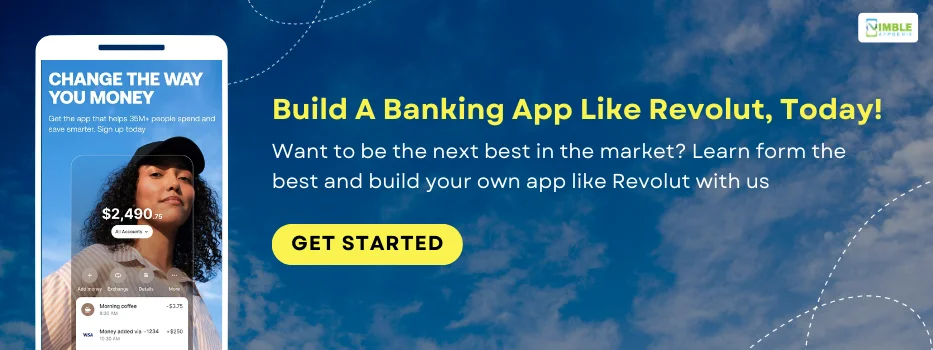
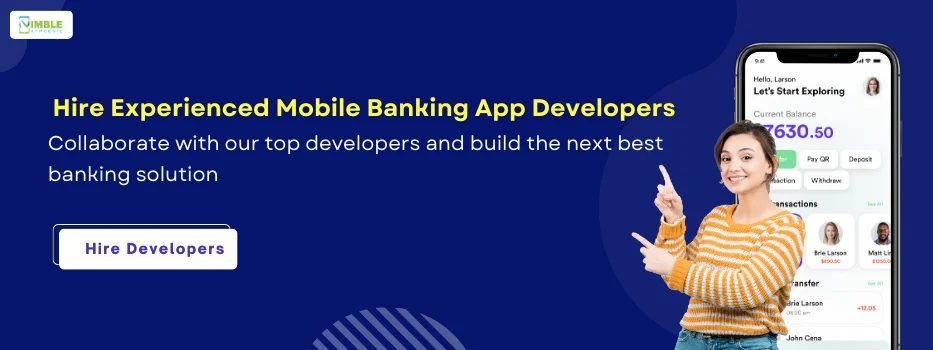








No Comments
Comments are closed.